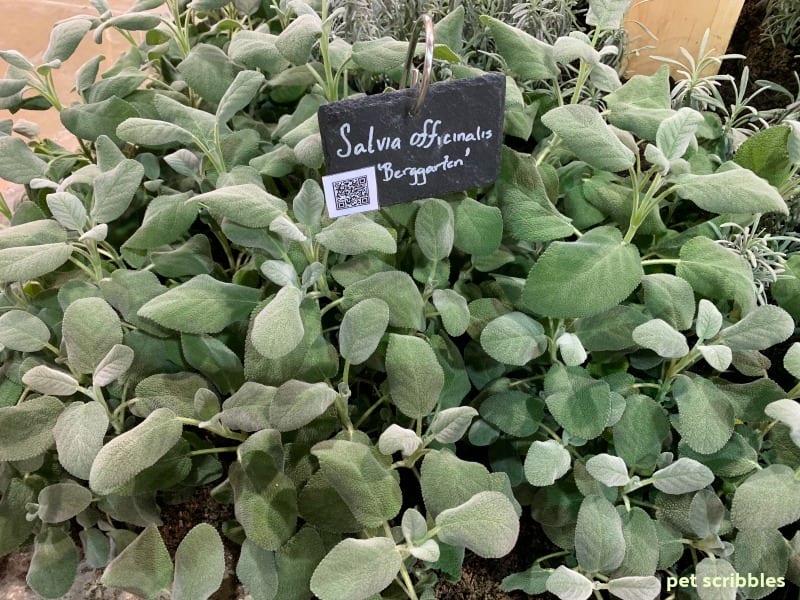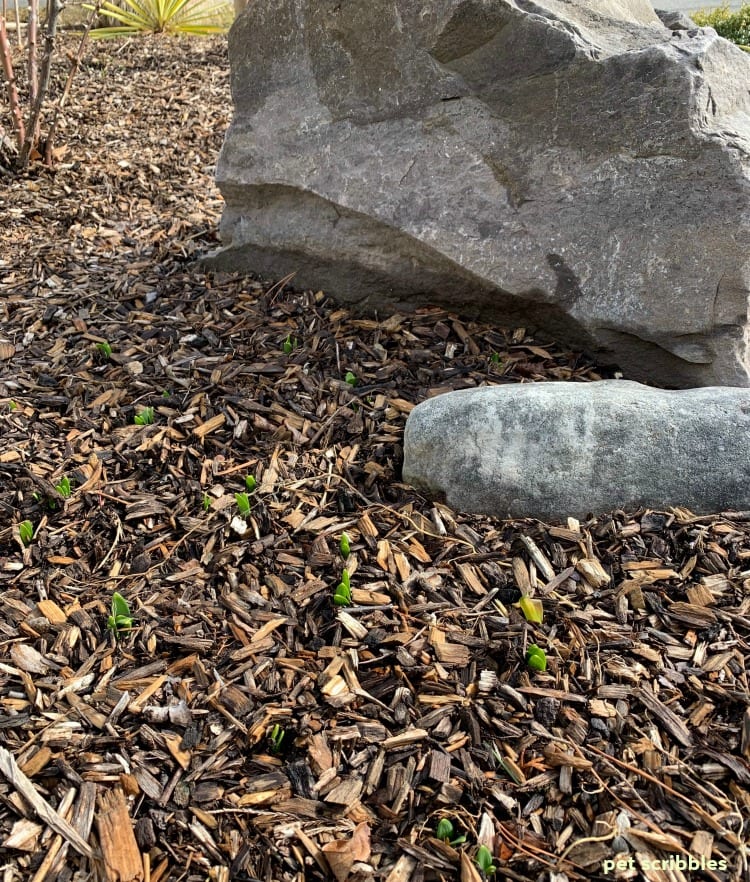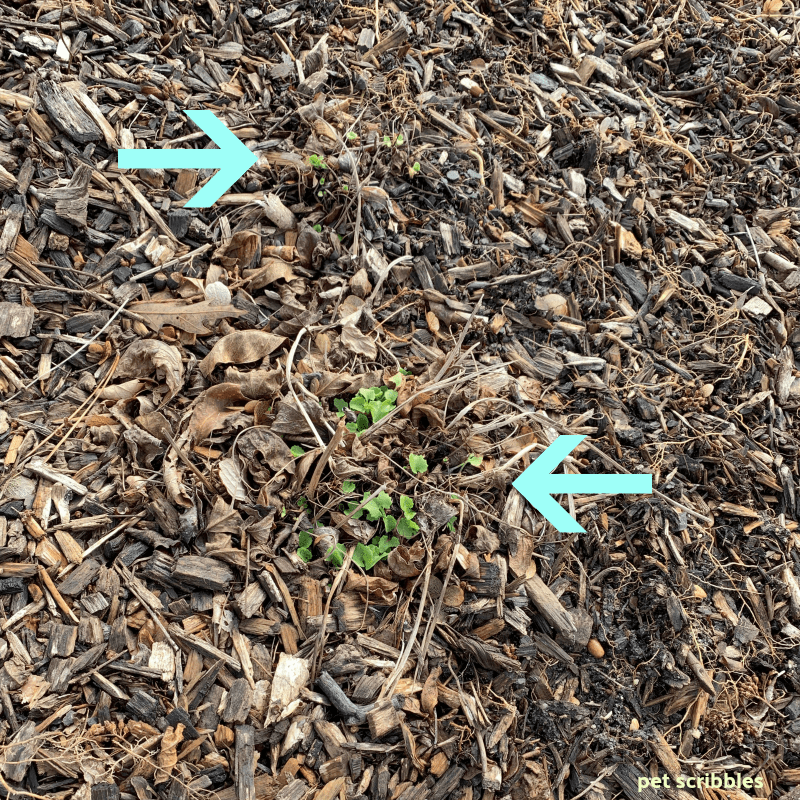What happened to Spring marching into the garden like a lion? Not yet this year, but the gardens continue to stir and stretch a bit. Spring is on the way!
For today’s Six on Saturday photos from my garden, I’m sharing a sort of hodge-podge of what I’ve seen this week.
This week’s series of photos and thoughts are a bit disjointed, but so are my feet after walking around the 10 acres of displays at the 2019 Philadelphia Flower Show today.
This was my first time attending the show — the largest flower show in the USA.
I’ll share a complete photo-filled post coming up next week, but here’s a tiny preview . . .
Salvia Officinalis “Berggarten”
I wasn’t familiar with Berggarten Salvia until we saw it at the flower show yesterday.
“Berg” means mountain in German and “Garten” — as you might have already figured out — means garden in German.
It helps having a German husband to quickly translate these things for you on the spot!
Berggarten Salvia — which is also known as Berggarten Sage has leaves which (to me) resemble the texture of Lamb’s Ears.
I’m going to dig into my books to learn more about this plant, as I think I want some in our garden…or garten!
Hellebores, Daffodils, Grape Hyacinths Marching into the Garden!
The image above made my heart skip a bit, and this was just the first photo — and display — I was drooling over at the flower show!
Those are Tete-a-Tete Daffodils, along with Grape Hyacinths and pretty Hellebores on the left. Such a serene color combination.
The Hellebores are listed as Helleborus x ballardiae “COSEH 930” and since I have no idea what that means, I googled it. I learned it is also called Mahogany Snow.
These Hellebores are creamy white flowers that age to a mahogany-pink shade. Most of them appeared to be more upright facing than other varieties I’ve seen in the past.
Stay tuned for my upcoming Philadelphia Flower Show post, which I promise will be filled with lots of inspiring photos from the show!
Bulb Watch 2019 — Crocus Update!
When bulbs start to break through the ground, are they marching into the garden, or marching up to the garden?
The first Blue Pearl Crocus in our front gardens has begun its ascent into the world! The color appears a bit darker than what the opened blooms will be, however I can already tell there’s a pretty blue hue to the petals.
Let’s hope the 99 other Blue Pearls that I planted will be joining this one soon!
Bulb Watch 2019 — Daffodil Update!
My obsession with these little Tete-a-Tete Daffodils has only increased now that I’ve seen so many of them blooming at the Philadelphia Flower Show.
When I planted these bulbs last Fall, I tried my best to make the bulbs have natural positions in relation to each other, rather than stiff and formal rows.
If these bulbs were in formal rows, then I guess the Daffodils would indeed look like soldiers marching into the garden. Hmmm…
I’m eager to see how these will look against the rocks once in bloom!
By the way, you might be able to see one of the Daffodils on the right side of the photo has a yellow look to the leaves. I’m not sure what happened there, but some animal chewed those leaves off. Either it wasn’t a Daffodil, or it’s just dying now? Strange.
Look — It’s Little Leo Leopard’s Bane!
I discovered Leopard’s Bane during the first Winter we lived here, as I studied plant catalogs deciding what I wanted for our gardens. Short answer? Everything!
These early-Spring flowering perennials do really well for me. They have bright yellow flowers that show up in the Spring gardens just as well as Daffodils do. Long blooming, but in the heat of the Summer the foliage dies back to the ground. No worries because it’s still there and will come back again year after year.
I’ve planted mine under our Pinky Winky Hydrangeas, so something blooms in the Spring before the Hydrangeas take over the show for the Summer months.
Read all about my love for Leopard’s Bane here: Little Leo Leopard’s Bane
Those Blooming Weeds
Good news?
We have blooms already in our backyard!
Bad news?
The blooms are weeds. Hah!
And yet, the form of this weed is so perfect, and the flowers so tiny, I have to admit they are kind of cute right now.
The stones around them are tiny gravel, and those are pine needles next to them, so you get an idea of how small these blooming weeds are.
Their time will be short-lived, as soon as I’m able to get out there and begin pulling them out.
Don’t forget to pop over to The Propagator garden blog.
Those are my Six on Saturday garden photos for this week!
Visit The Propagator blog to see his six garden photos, then scroll down to the comments to see many gardeners from all over the world sharing our photos!
This is part of my Saturday, enjoying a cup or two of tea and taking in everyone’s garden projects!
Happy March!








Weeds have some of the prettiest flowers!
Berggarten Salvia is a type of common garden sage, the kind you eat. It rarely blooms. I find sage plants pretty in their own right, and have several in my herb garden. I save the ornamental salvias for the flower beds. Usually “salvia” is used for the flowering type, and “sage” for the culinary. Berggarten Salvia is culinary.
The weed you have shown is the worst of my garden. It spreads so quickly! Fortunately easy to remove but you have to do it just before flowering.
Thank you for sharing these photos of the Philadelphia Flower Show. It must have been wonderful. ( I fell in love with these pale muscari, not seen here yet…)
Your weed is very similar to one of our commonest, but maybe not the same. We call it bittercress. I have grudgingly admired it for surviving in the worst of conditions, then flowering and seeding when it’s about half an inch high and wide. There’s a perennial form of it from New Zealand we get occasionally that has fine but strong roots and is much harder to get out.
Bittercress (which auto corrected to buttercream for some reason) is the most common weed in my garden. Some very nice displays at that flower show and some Muscari!
That sounds like a big flower show! Good to get some ideas.